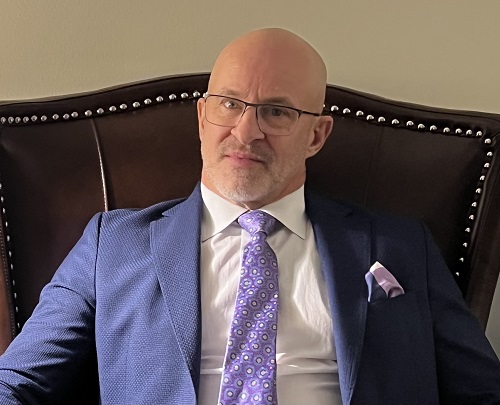Risk Management in Operations: How to Identify Risks in your Business
Businesses and organisations need risk management in operations no matter which direction they take. Not only is your business facing constant risks from employee conduct, data, processes, and controls but there are also cultural, ethical, and moral beliefs at stake.
Operational risk can be summarized as the risk of doing business.
To prevent a harmful event, you and your business should better understand your operational risk profiles and tolerance. Doing so helps you plan and adopt your own risk culture while setting moral and ethical standards for your organisation.
What is Risk Management?
To understand operational risk and how it affects your business, you first need to understand the basics of risk management.
Risk management is identifying, assessing, and controlling threats to your business’s capital and earnings.
Threats or risks can stem from various sources, including:
- Financial & legal uncertainty
- Management & staff errors
- Accidents
- Natural disasters
- Cyber security
- Data leaks
Risk management allows organisations and businesses to prepare for the unexpected. You can minimize risks before they happen, saving precious time and money.
You can implement a risk management plan. It helps your business establish procedures to avoid potential threats and lessen their impact if they do occur.
Important benefits of effective risk management:
- Fosters a safe and secure environment for staff and customers
- Increases operational stability and decreases legal liability
- Provides protection from harmful events to the company and the environment
- Protects people and assets from potential harm
- Establishes the organisation’s specific insurance needs to save on premiums
Risk management in operations
All companies have operational risks.
They stem from the breakdown in your organisation internally rather than from your finished product or service.
Operational risk management is a facet of your organisation’s overall risk management process, resulting from ineffective:
-
- Internal processes
- Staff
- Systems
- Legal & compliance

How to identify & assess operational risk
Many insurance companies specialize in risk management. There are many tools at their disposal to assess financial and insurance risks. Surprisingly though, there are no perfect models to assess operational risk.
Few insurance companies have gathered the right data to allow an accurate model. Fortunately, there are still ways to assess operational risk.
Risk control and self-assessments
The risk control and self-assessment process (RCSA) is a useful tool. It involves surveying and talking to leaders in each business area or industry.
When surveying, focus on the significant risks. Don’t focus on all of the minor or inconsequential risks. They detract from the bigger picture.
Benefits of RSCA:
- As the leader of your business, you can use regular assessment to identify top risks and how to control them.
- You gain broad insights into your area of business and the probability of risks.
- You lead your business with a goal of strategic risk governance, which helps you develop a strong risk culture.
Identify top operational risks
Top operational risks vary from business to business.
Everyone has different a different risk appetite. It’s up to you to determine whether a large investment in risk mitigation is best. Perhaps a corporate investment for another aspect of your business is more beneficial.
Choosing a third-party risk assessment ensures executive leaders have the best information available. You can accept the operations risk as is or invest the money to solve the problem.
Identifying top emerging operational risks
What risks are around the corner, waiting to surprise you? Are there any novel issues that can cause financial or operational damage to your business?
Operational risk scenarios
Walking through risk event scenarios gives you insights into how current systems and processes work. Scenario analysis can help you decide on investments and plans to mitigate the risks and minimize the losses if said scenario occurs.
How to manage operational risks
Managing operational risk is not as straightforward as managing insurance or financial risk.
It can be directly or indirectly financial and refers to both the risk of operating and managing your business.
The ‘three lines of defence’ (3LOD) is a widely accepted effective model for risk management. It helps manage all risk types and is especially useful for wide-ranging operational risk.
First line of defence:
This is your operations management, which can include positions such as risk manager and chief risk officer. They should be alert for operational risk events on a daily basis.
Second line of defence:
Once you have an operational risk management team, you set the operational risk management process parameters. Provide a risk management framework to help determine whether you should accept or mitigate the identified risk.
Third line of defence:
The third LOD is your internal audit function. What steps will you take to determine the effectiveness of your strategic risk management? How will you assure the risk assessors that you follow your field’s best practices?
Operational Risk Insurance
It is essential to plan for significant loss or potential disasters as you conduct business. Because of this, the benefits of insurance for risk management cannot be understated.
Business insurance falls primarily into two categories, property coverage and liability coverage.
Operational risk insurance requires complex oversight over business processes and functions.
To determine the type and oversight of your coverage needed, you first perform a risk assessment. You can determine your business’s key risk indicators and what you can do to control and mitigate that risk.
How to ensure proper coverage for your operational liabilities:
- Consider bundling all your insurance needs under one insurance agent
- Change your insurance coverage as your business grows and fluctuates
- Offering health insurance and benefits to your employees to keep high-performing employees
What not to do to ensure proper coverage for your operational liabilities:
- Choose an inexperienced or poorly trained insurance provider
- Self-insuring any part of your business
- Ignoring staff safety training
- Allowing your insurance policies to lapse
It is difficult but essential to find the balance between pricing and coverage. Of course, pricing is important, but finding a qualified insurer provides you with the best coverage based on operations, size, and scope.
Insurance for risk management in operations helps you and your business better understand your risk profiles and tolerances.
Different problems will always surface as a business owner. Fortunately, risk assessment and proper insurance will protect your assets and help you stay in business.







